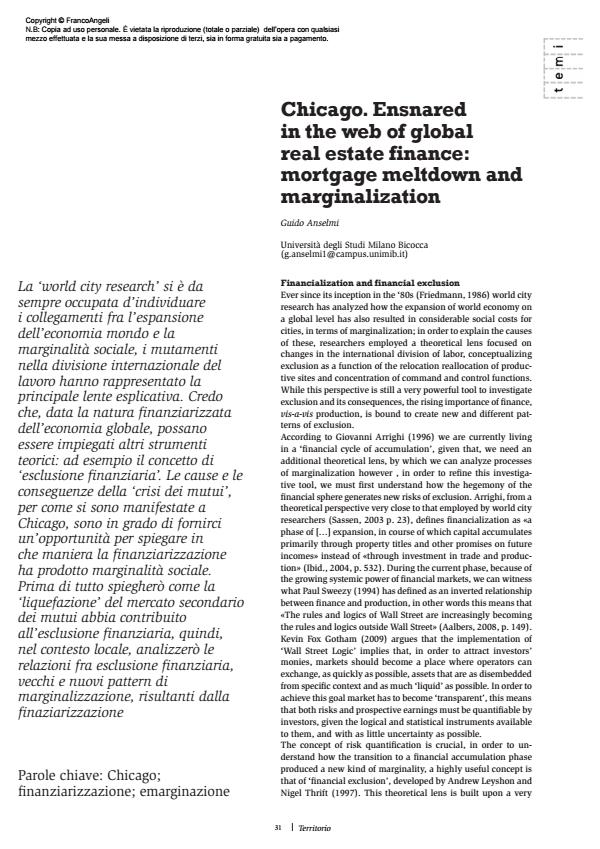Chicago. Ensnared in the web of global real estate finance: mortgage meltdown and marginalisation
Journal title TERRITORIO
Author/s Guido Anselmi
Publishing Year 2013 Issue 2013/65
Language Italian Pages 6 P. 31-36 File size 235 KB
DOI 10.3280/TR2013-065004
DOI is like a bar code for intellectual property: to have more infomation
click here
Below, you can see the article first page
If you want to buy this article in PDF format, you can do it, following the instructions to buy download credits

FrancoAngeli is member of Publishers International Linking Association, Inc (PILA), a not-for-profit association which run the CrossRef service enabling links to and from online scholarly content.
‘World city research’ has always sought to identify links between the expansion of the world economy and social marginalisation. Changes in the division of international labour have provided the main explanatory insights. I believe that, given the financialised nature of the global economy, other theoretical instruments can be employed, such as the concept of ‘financial exclusion’ for example. Because of the way they have manifested in Chicago, the causes and consequences of the ‘mortgage meltdown’ are able to give us a chance to explain how financialisation has produced social marginalisation. Firstly I explain how the ‘meltdown’ of the secondary mortgage market has contributed to financial exclusion and then, in the local context, I analyse the relationships between financial exclusion and old and new patterns of marginalisation resulting from financialisation.
Keywords: Chicago; financialisation; marginalisation
Guido Anselmi, Chicago. Ensnared in the web of global real estate finance: mortgage meltdown and marginalization in "TERRITORIO" 65/2013, pp 31-36, DOI: 10.3280/TR2013-065004